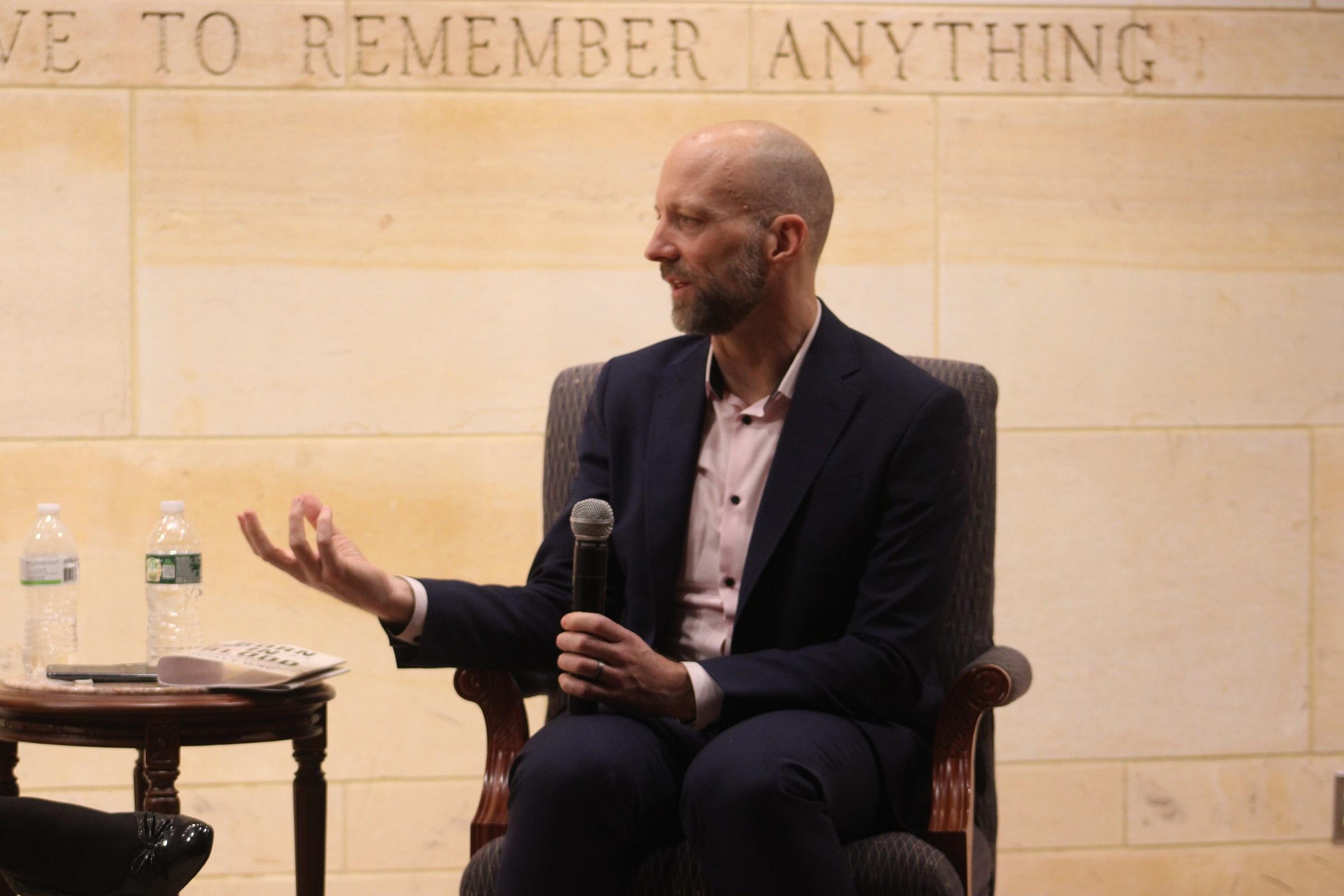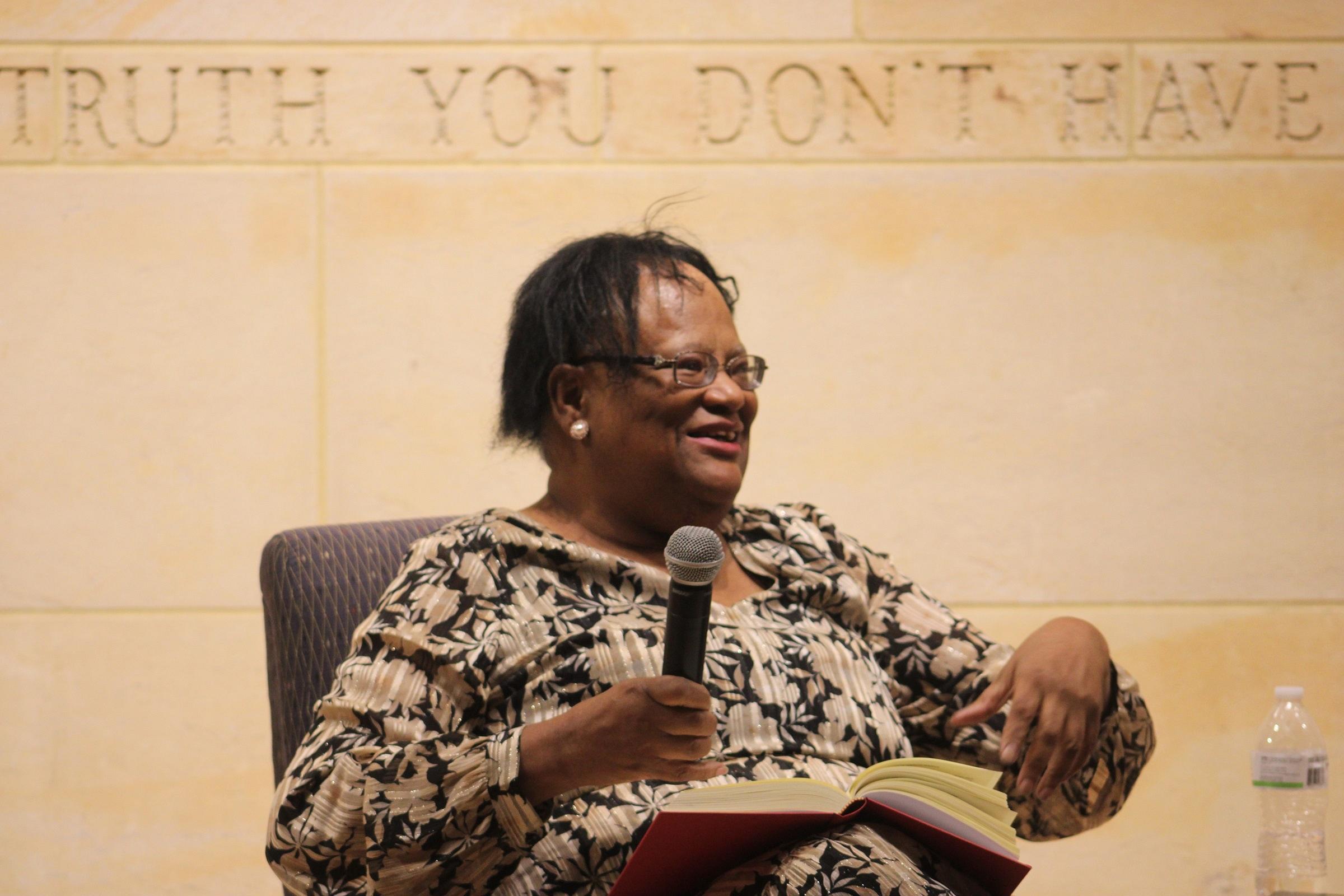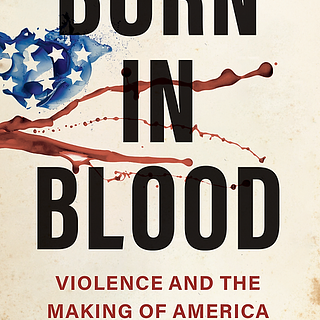Born in Blood: Violence and the Making of America
Mark Twain House
Hartford
Jan. 19, 2024
My journey through college was not an easy one. It took me three different schools spread across 10 years to finally earn my bachelors degree. In the meantime I’d had a son, been married and divorced, moved and changed jobs several times. College is difficult enough for young adults with few responsibilities; it becomes almost impossible when you also have a family to care for.
I would have never made it without the support of professors and other staff when I got to Trinity College, especially my major advisor, Professor Scott Gac. He’s one of the kindest, most patient people I’ve ever met, which makes his study of the brutal violence in American history all the more ironic.

I went to see him discuss his new book, Born in Blood: Violence and the Making of America at the Mark Twain House with Vivian Martin, professor of journalism at CCSU.
As the two talked, Gac explained his thesis: “America has a tradition of violence. Violence is not simply a tool that has been used in the past. Violence is at the center of liberal society.”
Early American history can be broken down into three major areas of violence: colonization, slavery and militarism. These three pillars form the support structure for white supremacy, which is as foundational to the beginning of the nation as the Declaration of Independence and the Constitution.
GAC discussed how soldiers in the Continental Army were often subject to corporal punishment. He described the use of “layers of violence” against workers by both private companies and the state during the rash of strikes that swept the nation in the 1870’s. But he rightly focused on the incredible brutality of slavery to drive home the point about the institutional nature of violence in American society.
“One of the questions I wanted to answer with my book is: the Founding Fathers believe in freedom. They wrote the words, ‘All men are created equal.’ So how did the United States go on to become the biggest slaveholding empire ever?” he said.
This led to one of the most fascinating revelations about the book. Every time Gac mentions a Founding Father or other delegate to the Constitutional Convention in 1787, he mentions how many enslaved people they kept in bondage. It was quite shocking to hear how many of the men vying for freedom were not only denying it to others, but using the most grotesque violence to do so.
The crowd at Mark Twain House was receptive to Gac’s ideas, but it was still clear that there was discomfort with the idea of men like John Hancock enslaving people. Or learning that George Washington banned Black soldiers from joining the Continental Army until he had no other choice but to accept them. Or that Connecticut had initially given Black men the right to vote during the revolutionary furor, but rescinded that right in the early 19th century.
Gac made it clear that history is not a straight line of progress. Rights, freedom and justice are always in contest, and the definition of those terms changes year to year, if not day to day. The use of violence is one of the main ways that those contests play out.
I’ve already read Professor Gac’s work as his student, so I have no doubt that Born in Blood is expertly researched, engagingly written and full of insights and discoveries. Still, it makes me happy that I can now show up and support him the way that he supported me all those years ago.
NEXT
Born in Blood: Violence and the Making of America is now available through Amazon and Cambridge University Press.
Jamil heads to Foxwoods to catch Mike Epps in the post-Club Shay Shay world.







